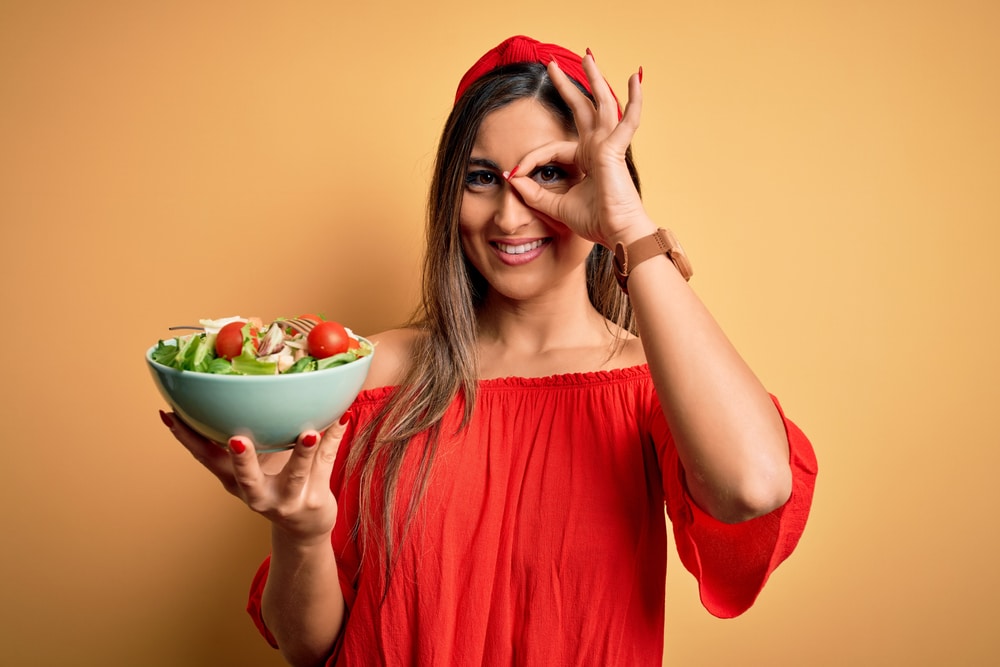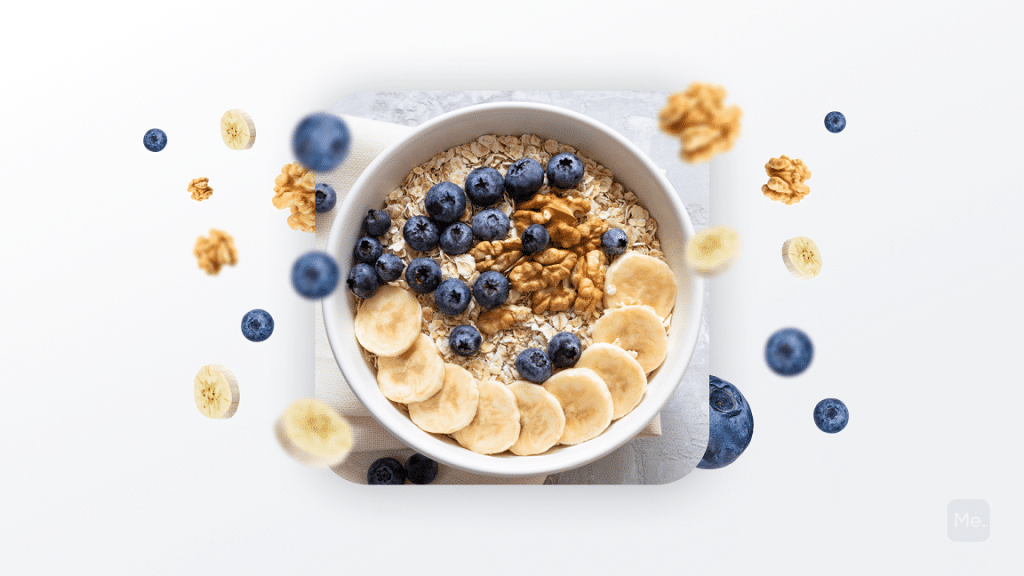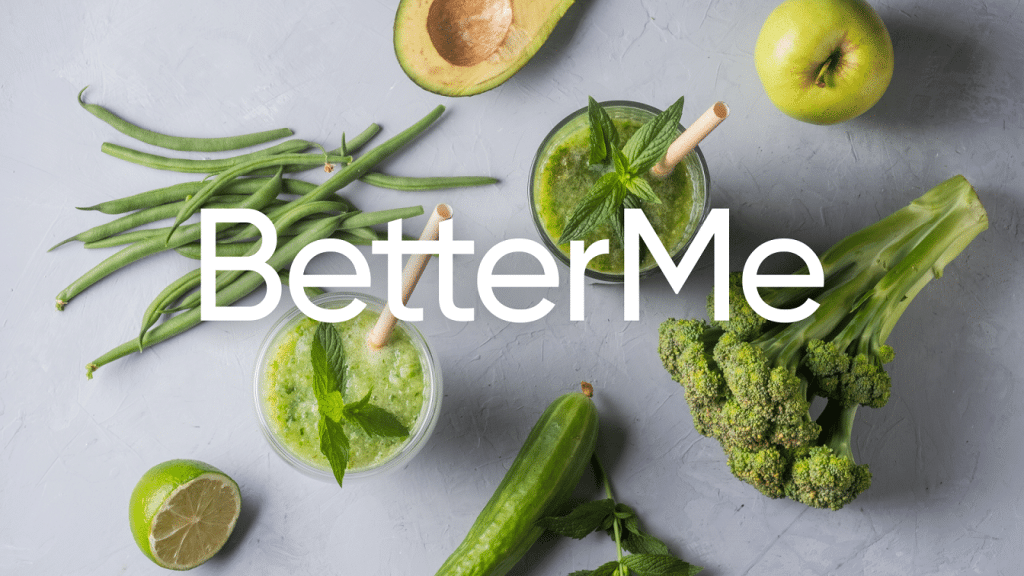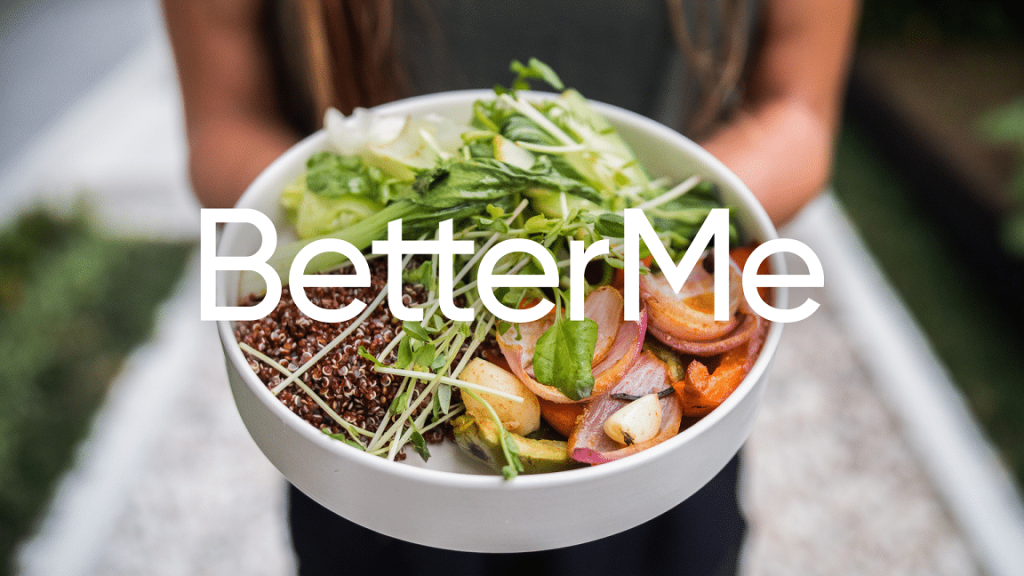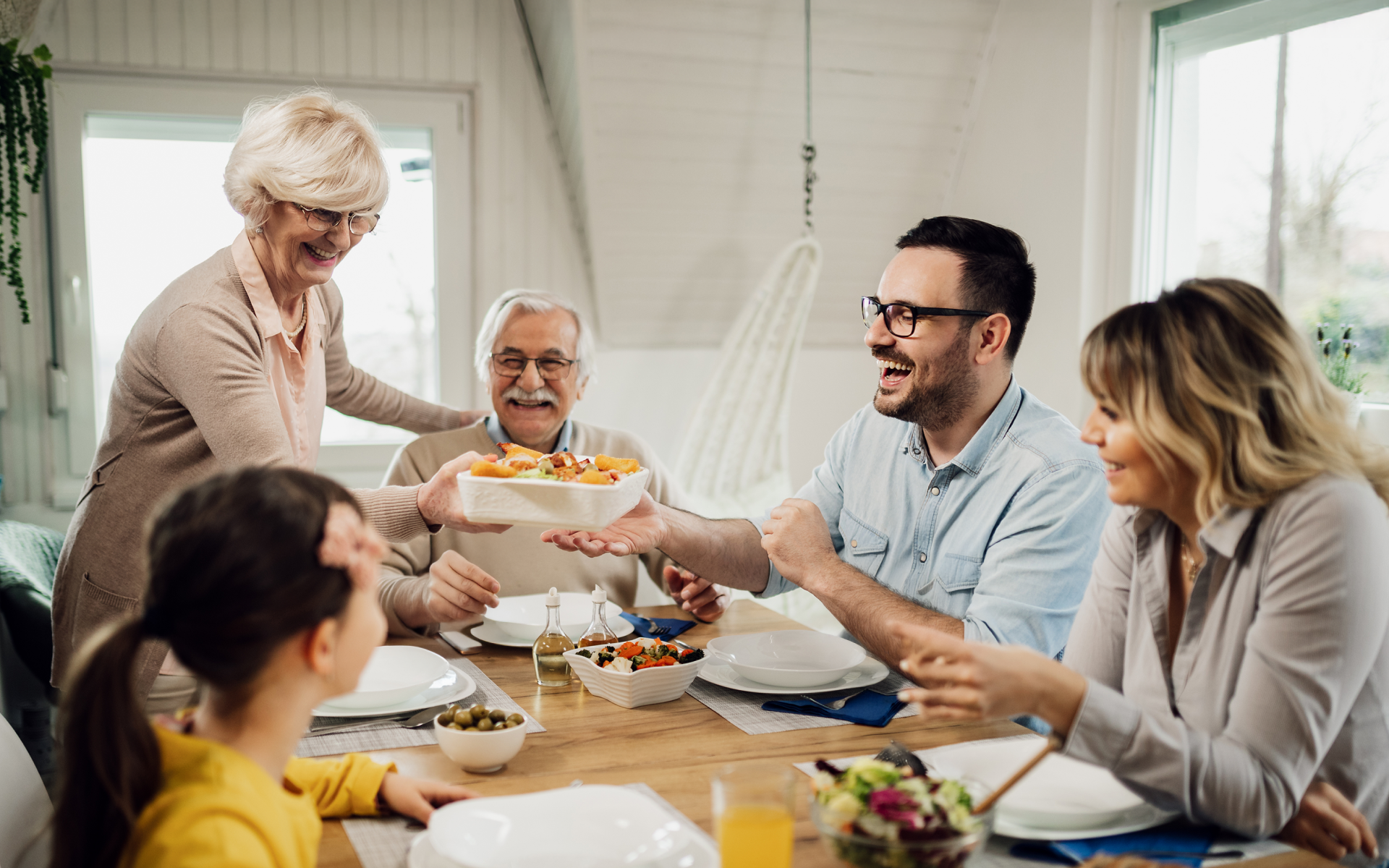The secret to weight loss is not kept behind seven locks: if you spend more energy than you consume (calorie deficit) — you lose weight. Then why do so many people still struggle to reach their weight goals? That’s because in most cases a calorie deficit comes at the expense of satiety and satisfied taste buds. The good news is that there’s a way to stay full while decreasing calorie intake — volume eating. Also referred to as volumetrics, this approach to nutrition is easy to understand and requires very little effort. Intrigued? Let’s look into some volume eating foods, recipes, and strategies.
Get your personalized
meal plan!
What Is Volume Eating?
The logic behind volume eating is simple: calories don’t make us full, it’s the volume of food we eat. Don’t just take our word for it, several studies have shown that people report similar levels of hunger and fullness when the food volume stays the same but calories are reduced (2).
The trick is that foods range considerably in how much you can eat for the same amount of calories: 340 kcals can be in the shape of a 100g doughnut or more than a kilogram of fresh strawberries.
This difference is based on the energy density (ED), which is the amount of energy you get from a given weight of food (kcal/g). ED differs for various macronutrients, let’s take a look at kcal per 1g (2):
- Fats — 9 kcal/g
- Carbohydrates and sugar — 4 kcal/g
- Protein — 4 kcal/g
- Fiber — 1.5-2.5 kcal/g
- Water — 0 kcal/g
So by regulating the composition of your food choices, you can have larger portions with fewer calories and reduce overall energy intake.
Volume eating is backed by more than a decade of research by Barbara Rolls, a professor of nutrition and head of nutritional sciences at Pennsylvania State University. Rolls provides laboratory-based, epidemiological, and clinical data to back this approach:
- Using energy density as a guide leads to overall better eating patterns (2). This means long-term results, as you adopt habits that promote sustainable weight maintenance without deprivation.
- One study by Roll’s group showed the connection between the low energy density of meals and weight status. A bigger fraction of a meal consisting of low-ED foods is associated with lower body mass index and waist circumference (4).
- Unlike many diets, volumetrics is accessible to people with various health conditions.
Read More: Portion Size For Weight Loss: 10 Tips To Master Portion Control
What To Eat To Feel Full?
Based on ED, we can differentiate “high-volume” and “low-volume” foods. The former are low-calorie items that you can eat in a large volume, the latter are foods with high ED that provide many calories even in low volume portions.
With volume eating, your task is to incorporate more high-volume foods that will fill up your stomach in a literal sense, so you don’t eat as much when giving in to your favorite low-volume food cravings like pizza and chocolate candies.
So what are the volume eating foods to include in your weight loss diet (2)?
Water-rich fruits and vegetables. You can “water down” your meals to make the overall energy density lower. Include:
- leafy greens like kale, lettuce, and spinach;
- fruit and berries like apples, blackberries, and strawberries;
- different types of cabbage like broccoli and cauliflower;
- other watery vegetables like peppers, cucumbers, zucchini, celery.
Fiber-rich foods. These are:
- whole grains like oats, buckwheat, brown rice, and quinoa;
- legumes like peas, beans, etc.
Easy Tips: How To Lose Weight With Volume Eating
But you can’t live off lettuce and whole-grain bread, right? Exactly! These high-volume foods are your guide to small changes, as volume eating is about a healthier balance of high- and low-volume foods achieved through easy strategies.
Here are a few volume eating tips to fine-tune your nutrition habits:
- Try eating low-ED food like a salad or a soup before the first course, so that you are already somewhat full before starting on your high-calorie low-volume items, especially those with fats and added sugar (5).
- Strive for water-rich fruits and vegetables to make up 50% of your plate/meal. Then, 25% — whole grains, and another 25% — lean proteins like tofu, legumes, white-fleshed fish, and poultry.
- When possible, substitute saturated fats found in butter, red meat, palm and coconut oils for healthier options like vegetable oils, avocados, and eggs. While these are low-volume foods, they often have the same ED as some fat-free items (2).
- Pay attention to your snacks, as they often sneak in low-volume high-ED foods in your diet. Prefer popcorn and fresh fruit over potato chips, nuts, and dried fruit (8).
- Limit your alcohol consumption. A drink seems like no meal at all, but its ED is 7 kcal/g.
The best part is that you don’t need to count calories to implement volume eating! But if you are into calorie counting, with volume eating you stay full on 1200 calories or whatever goal you have based on your energy expenditure.
Whether you’re a workout beast or just a beginner making your first foray into the world of fitness and dieting – BetterMe has a lot to offer to both newbies and experts! Install the app and experience the versatility first-hand!
Volume Eating And Keto
You might wonder if the volume eating approach is an option if you are on a Keto diet. It seems counter-intuitive, as Keto is a high-fat low-carb diet, meaning that its core is foods with high energy density.
However, keto volume eating is a thing! Some volume eating approaches might be lifesavers for keto-newbies who are struggling to feel full with small portion sizes. Adding more high-volume greens and low-carb veggies can ease the transition, so you don’t have to power through the hunger. Also, when you feel up on water-rich foods, you’ll more likely avoid fat overconsumption.
Recipe Ideas For Volume Eating
If you are still hesitating despite all the benefits of volume eating, it might be because nibbling on kale and cucumbers before moving on to carbs and proteins doesn’t sound like much fun. We gathered some volume eating recipe examples to show that high-volume low-ED foods don’t mean less flavor!
Easy Vegetarian Miso Soup
Ingredients:
- Water (4 cups)
- Shredded nori or wakame seaweed (1 tbsp)
- White miso (⅓ cup)
- 3 chopped scallions
- Silken tofu (½ block), cut into 1-inch cubes
- Soy sauce
Instructions:
- Use a medium pot, add water, and simmer shredded seaweed for 5-6 minutes.
- Switch to very low heat and add the miso, scallions, tofu, and soy sauce.
- Stir till miso dissolves and make sure it’s not boiling.
- All done, serve hot, and enjoy!
The recipe is for 4 servings, 83 kcals each (6).
Cucumber, Pea & Lettuce Soup
Ingredients:
- Rapeseed oil (1 tsp)
- A roughly chopped small bunch of spring onions
- A roughly chopped cucumber
- Roughly chopped round lettuce
- Frozen peas (225 g)
- Vegetable bouillon (4 tsp)
- Bio yogurt (optional, 4 tbsp)
- 4 slices of rye bread
Instructions:
- Boil 1.4 liters of water.
- Use a large pan to heat the oil and fry spring onions for 5 minutes, steer frequently.
- Add lettuce, peas, and cucumber and pour the boiled water.
- Stir in the bouillon and simmer for 10 minutes while covered (the vegetables should be still bright green).
- Use a blender to reach a smooth consistency. Serve with the bread either hot or cold.
The recipe is for 4 servings, 156 kcals each (3).
Read More: Flaxseed Recipes For Weight Loss: 6 Simple Ways To Use This Superfood
3-Ingredient Mediterranean Salad
Ingredients:
- Diced tomatoes (3 cups)
- A large diced cucumber
- Chopped fresh parsley leaves (20 g)
- Salt and pepper
- Ground Sumac (1 tsp)
- Extra virgin olive oil (2 tbsp)
- Freshly squeezed lemon juice (2 tsp)
Instructions:
- Mix tomatoes, cucumbers, and parsley in a large bowl. Add salt, and set aside for 5 minutes.
- Gently mix in the rest of the ingredients.
- Give it a few more minutes to soak in the flavors and enjoy!
The recipe is for 4 servings, 105 kcals each (1).
Roasted Cauliflower And Zucchini
Ingredients:
- 1 head of cauliflower
- 2 medium-sized zucchinis
- Garlic (4 cloves)
- Extra virgin olive oil (2 tbsp)
- Herbes de Provence (2 pinches) or other seasonings
- Sea salt
- Freshly ground black pepper
Instructions:
- Preheat the oven to 375°F (190°C).
- Cut the washed cauliflower and zucchini.
- Dice the garlic.
- Mix vegetables, olive oil, and garlic in a bowl, so they are evenly coated.
- Spread them on a baking dish in a single layer.
- Sprinkle with the remaining seasoning.
- Bake for 45 minutes.
The recipe is for 4 servings, 84 kcals each (7).
Conclusion
Volume eating is a flexible science-based approach to nutrition that leads to sustainable weight loss for minimal effort. Once you learn about energy density and decide which high-volume foods to incorporate, following the tips is even easier.
Among other benefits:
- You don’t cut out any food groups or ingredients completely, so you can still enjoy moderate amounts of your guilty-pleasure foods.
- You stay full and satisfied on a lower calorie count (without even counting calories)!
- Volume eating allows you to combine the approach with other diets, even Keto.
So if you are looking for ways to bring your weight loss game to a new level, volume eating is a thing to try!
DISCLAIMER:
This article is intended for general informational purposes only and does not address individual circumstances. It is not a substitute for professional advice or help and should not be relied on to make decisions of any kind. Any action you take upon the information presented in this article is strictly at your own risk and responsibility!
SOURCES:
- 3-Ingredient Mediterranean Salad (2019, themediterraneandish.com)
- Changing the Energy Density of the Diet as a Strategy for Weight Management (2005, sciencedirect.com)
- Cucumber, pea & lettuce soup (2017, bbcgoodfood.com)
- Dietary energy density and obesity: how consumption patterns differ by body weight status (2018, link.springer.com)
- Dietary energy density: Applying behavioural science to weight management (2017, onlinelibrary.wiley.com)
- Easy Vegetarian Miso Soup (2021, thespruceeats.com)
- Roasted Cauliflower and Zucchini (2019, fearlessfresh.com)
- Slide show: Choose the right foods for weight control (2021, mayoclinic.org)
- Volumetrics (2021, webmd.com)
